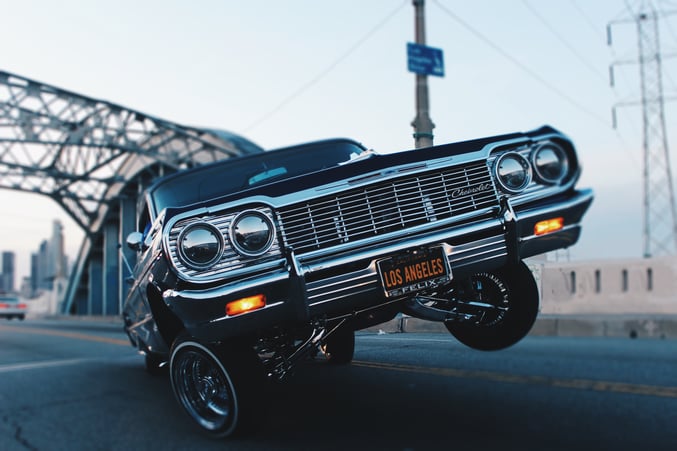
The information generation has made being a DIY guru easier than ever. Whether you want to build bookshelves, fix the annoying leak in your bathroom or knit socks, there’s a tutorial or blog out there that will help you do it. Cars are a part of the DIY scene, and when you want to drastically change the appearance of your ride, what better way to do it than a new paint job? However, before you hop on the DIY paint job bandwagon, make sure you have a few crucial basics in mind. Doing it right will save you money and headaches, and when done correctly, you won’t be able to tell the difference between a professional job and a well-done DIY.
The Correct DIY Car Painting Materials
A great paint job begins with the right materials. You can’t go to the local store and buy any paint and paintbrush. You’ll want to invest in:
- Ample amounts of 1200- or 2000-grit wet-and-dry sandpaper
- Air-powered or electric sander
- Newspapers
- Masking tape
- Air compressor and spray gun
- Paint thinners
- Buffers
- Face mask and safety glasses
- Undercoat
- Topcoat of acrylic or enamel paint
- Clear coat lacquer
- Optional: Dust extractor
You’ll want to get an accurate estimate of the amount of paint needed. Typically you’ll need 1-1.5 gallons undercoat, 3-4 gallons topcoat and 2-4 gallons of lacquer. The next step will be properly prepping your work site.
Getting your Work Site Ready
You’ll have to make the decision on whether the great outdoors is a safe bet, or if working within an encased space will work better in your area. Some of the things to consider if you are going to work outside are the length of the process (it can take several days), dust, pollen, rain storms and anything else that could alter the outcome of your vehicle’s paint job. If you choose to work inside, find a well-ventilated space and make sure it is clean.
To clean a paint space you’ll want to remove dust, cover and tape off any areas you don’t want painted and remove anything that could contaminate the paint job. Outside, you’ll want to hose down the area you plan to work in, and avoid situating the car under any trees or near areas with road grim, grit and dirt. Good lighting is also a must, inside or out. Avoid any spaces with appliances that may be ignited by paint fumes.
Car Prep
It’s important to know that painting your car will most likely take a few days, so it’s best if you can set aside that time to get it done in one consecutive chunk. When you’re ready to start prepping you car, you’ll want to remove chrome or plastic trim that’s easy to take off and put back on later.
Painting your Car
Once everything is prepped, you can begin the work. Put on any safety gear necessary for each step. You’ll be performing the following tasks:
- Dent and rust removal – Repair any dents you can and remove rust
- Strip – You’ll want to sand in circular motions down to the bare metal, making sure it’s smooth for an optimal paint finish (this can easily take a couple hours for each panel of your vehicle)
- Wipe – Wipe the entire surface and use thinners to remove dust
- Tape off – Tape off any parts of the car you don’t want painted
- Prime – Add a vehicle primer (practice with the spray before placing it on the car to ensure a smooth, run-free finish)
- Lightly sand – The primer will need to be lightly sanded back to a smooth finish
- Paint – Follow the directions for the ideal number of coats, finish with a couple layers of clear coat
Colors and Get Creative
DIY car painting can save you thousands, which means if you like having a “new” ride every once in a while, it’s more affordable to do it yourself. After the first time, it will get easier. Play with colors and customize with unique features and details. Look up what others have done and come up with your own interpretations. Your paint job can be as simple as a single color or include stencils, racing stripes or other graphics
DIY doesn’t have to be overly complicated. If you’re interested in painting your vehicle, all you need is patience, practice, a little money and some time.




